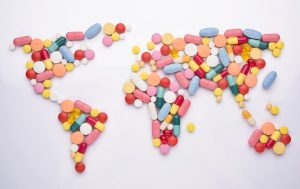 The outbreak of COVID-19 has significantly impacted physical visits to drug manufacturing facilities. This raises a number of challenges, since many regulations — especially those relating to inspections — weren’t written with pandemic “social distancing” conditions in mind.
The outbreak of COVID-19 has significantly impacted physical visits to drug manufacturing facilities. This raises a number of challenges, since many regulations — especially those relating to inspections — weren’t written with pandemic “social distancing” conditions in mind.
As a result, regulators and pharma companies are having to reinvent or temporarily change the methods they use to perform inspections and supplier audits. In many cases travel bans make in-person inspections impossible, but even when they do not, workers employed by regulatory agencies and pharma companies must be protected by limiting their potential for exposure to the virus. At the same time, quality controls must be maintained while minimizing risks posed by visitors to staff at pharma labs and production facilities.
Here’s how some of the key regulators in major markets are responding, and what you can do to ensure minimal disruption during this period.
U.S. Food & Drug Administration (FDA)
While the FDA has directed as many employees as possible to switch to teleworking, this isn’t possible for those who perform lab, manufacturing or warehousing activities, monitor imported products or other related tasks. In-person visits to most facilities outside the U.S. have been postponed through April. Inspections considered “mission-critical” by the FDA are still being looked at on a case-by-case basis. Routine surveillance visits inside the U.S. were also scaled back wherever possible.
The agency has stressed that inspections are just one of the tools it uses to maintain quality control, and that it “will continue to leverage all available authorities to continue to ensure the integrity of the products we regulate.”
The agency has also acknowledged that new product approvals could be delayed by the inability of the agency to perform inspections.
In the interim, the FDA is weighing alternative ways to conduct inspection-related work. For example, under certain conditions the agency might evaluate a firm’s records in lieu of an onsite inspection. More details can be found in the FDA’s press announcement.
European Medicines Agency (EMA)
The EMA plays a key role in coordinating the EU’s Good Manufacturing Practice (GMP) inspections of pharma manufacturing sites, as well as facilitating cooperation between Member States for inspections of manufacturers in third countries.
In cases where onsite audits are not currently possible, the EMA suggests that “a risk-based supplier qualification process can be supported by a remote or virtual audit.” And while the benefits of onsite tours of facilities, warehouses, and laboratories are impractical at this time, the agency suggests other audit procedures — such as interviewing personnel and reviewing documents — could still be handled remotely.
UK Medicines and Healthcare Products Regulatory Agency (MHRA)
Near the end of March, the MHRA announced that it would only be conducting “essential” on-site inspections, and that it expects pharma companies to maintain GxP compliance. In other cases, alternative approaches such as office-based assessment will temporarily replace some aspects of on-site inspections. Unannounced in-person visits are still a possibility, however, if the organization considers it necessary to protect public health. The MHRA has published its thoughts in more detail in a blog post titled MHRA Good Practice (GxP) inspections during the COVID19 outbreak.
Pharmaceutical Inspection Cooperation Scheme (PIC/S)
The Pharmaceutical Inspection Convention and Pharmaceutical Inspection Co-operation Scheme (PIC/S) are co-operative arrangements between 53 participating Regulatory Authorities in the field of Good Manufacturing Practice (GMP) for medicinal products for human or veterinary use.
In 2018, long before the outbreak of COVID-19, the PIC/S outlined a process for desktop assessment of GMP compliance. This non-binding guidance was issued in response to concerns that demand for inspecting pharmaceutical manufacturing facilities far exceeds what any one Competent Authority (CA) can accomplish.
 While the original purpose of these guidelines was to address the growing complexity of the global pharmaceutical industry, they have taken on a new importance for the 53 members of the PIC/S during the response to COVID-19. The procedure serves as both a structure and a resource for remote inspections of some international suppliers. As a result, some regulators that have not previously permitted remote inspections are now turning to it as a model.
While the original purpose of these guidelines was to address the growing complexity of the global pharmaceutical industry, they have taken on a new importance for the 53 members of the PIC/S during the response to COVID-19. The procedure serves as both a structure and a resource for remote inspections of some international suppliers. As a result, some regulators that have not previously permitted remote inspections are now turning to it as a model.
The Common Theme: Take Ownership of Quality
While no one is claiming they will rely exclusively on self-regulation by the industry, most authorities have issued direct appeals to pharma companies to take ownership of maintaining high quality standards and industry best practices. Documentation will be more critical than ever during this historic time — both to facilitate remote inspections where applicable, and as a record of compliance when onsite inspections resume.
The pharma industry should be prepared to use teleconferencing and other remote communication methods in new ways, and to exercise flexibility when working with regulators in order to minimize business disruptions.










